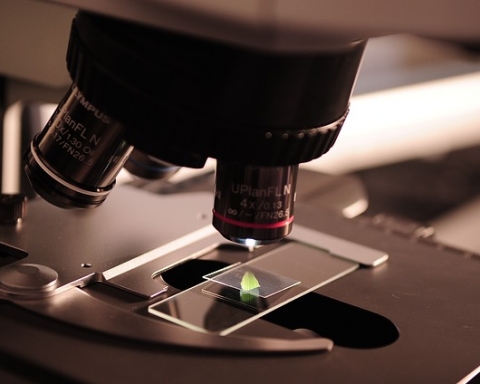Topics include: Bioinformatics definition, Concepts, Analyzing sequence data, Multiple Sequence Alignment & usefulness, Bioinformatics tools, Fields and Applications of Bioinformatics. [column]Bioinformatics definition:
Bioinformatics is the computational methods for collecting, organizing, and analyzing large amounts of biological data.
According to the NIH Biomedical Information Science and Technology Initiative Consortium, Research, development, or application of computational tools and approaches for expanding the use of biological, medical, behavioral or health data, including those to acquire, store, organize, archive, analyze, or visualize such data.
As submitted to the Oxford English Dictionary bio – informatics: bioinformatics is conceptualizing biology in terms of molecules (in the sense of Physical chemistry) and applying “informatics techniques” (derived from disciplines such as applied math, computer science and statistics) to understand and organize the information associated with these molecules, on a large scale. In short, bioinformatics is a management information system for molecular biology and has many practical applications.
Concepts:
Analyses in bioinformatics focus on three types of datasets: genome sequences, macromolecular structures, and functional genomics experiments (e.g. expression data, yeast two–hybrid screens). But bioinformatic analysis is also applied to various other data, e.g. taxonomy trees, relationship data from metabolic pathways, the text of scientific papers, and patient statistics. A large range of techniques are used, including primary sequence alignment, protein 3D structure alignment, phylogenetic tree construction, prediction and classification of protein structure, prediction of RNA structure, prediction of protein function, and expression data clustering. Algorithmic development is an important part of bioinformatics, and techniques and algorithms were specifically developed for the analysis of biological data (e.g., the dynamic programming
Bioinformatics has a large impact on biological research. Giant research projects such as the human genome project would be meaningless without the bioinformatics component. The goal of sequencing projects, for example, is not to corroborate or refute a hypothesis, but to provide raw data for later analysis. Once the raw data are available, hypotheses may be formulated and tested in silico. In this manner, computer experiments may answer biological questions which cannot be tackled by traditional approaches. This has led to the founding of dedicated bioinformatics research groups as well as to a different work practice in the average bioscience laboratory where the computer has become an essential research tool. algorithm for sequence alignment).
Three key areas are the organisation of knowledge in databases, sequence analysis, and structural bioinformatics. [….]
Bioinformatics Tools:
BLAST: The Basic Local Alignment Search Tool (BLAST) for comparing gene and protein sequences against others in public databases. Specialized BLASTs are also available for human, microbial, malaria, and other genomes, as well as for vector contamination, immunoglobulins, and tentative human consensus sequences.
FASTA
A database search tool used to compare a nucleotide or peptide sequence to a sequence database. The program is based on the rapid sequence algorithm described by Lipman and Pearson. It was the first widely used algorithm for database similarity searching.[/column]
EMBOSS
EMBOSS (The European Molecular Biology Open Software Suite) is a new, free open source software analysis package specially developed for the needs of the molecular biology user community. Within EMBOSS around 100 programs are found (applications) for sequence alignment, database searching with sequence patterns, protein motif identification and domain analysis, nucleotide sequence pattern analysis, codon usage analysis for small genomes, and much more.
Clustalw
Clustalw is a general purpose multiple sequence alignment program for DNA or proteins. It produces biologically meaningful multiple sequence alignments of divergent sequences, calculates the best match for the selected sequences, and lines them up so that the identities, similarities and differences can be seen.
RasMol
It is a powerful research tool to display the structure of DNA, proteins, and smaller molecules. Protein Explorer, a derivative of RasMol, is an easier to use program.
Importance/scopes/applications of Bioinformatics:
Bioinformatics is being used in following fields:
1) Molecular medicine:
• The human genome has profound effect on the fields of biomedical research and clinical medicine. Every disease has a genetic component.
• This may be inherited (as is the case with an estimated 3000-4000 hereditary disease including Cystic Fibrosis and Huntingtons disease) or a result of the body’s response to an environmental stress which causes alterations in the genome (eg. cancers, heart disease, diabetes.).
• From Human Genome Project Data Base we can search for the genes directly associated with different diseases and understand the molecular basis of these diseases more clearly.
• This new knowledge of the molecular mechanisms of disease will enable better treatments, cures and even preventative tests to be developed.
2) Personalised medicine
• Clinical medicine will become more personalized with the development of the field of pharma-co-genomics.
• This is the study of how an individual’s genetic inheritance affects the body’s response to drugs.
• At present, some drugs fail to make it to the market because a small percentage of the clinical patient population show adverse affects to a drug due to sequence variants in their DNA.
• As a result, potentially lifesaving drugs never makes it to the marketplace.
• Today, doctors have to use trial and error to find the best drug to treat a particular patient as those with the same clinical symptoms can show a wide range of responses to the same treatment.
• In future, doctors will be able to analyse a patient’s genetic profile and prescribe the best available drug therapy and dosage from the beginning.
3) Preventative medicine
• With the specific details of the genetic mechanisms of diseases being unraveled, the development of diagnostic tests to measure a person’s susceptibility to different diseases may become a distinct reality.
• Preventative actions such as change of lifestyle or having treatment at the earliest possible stages when they are more likely to be successful, could result in huge advances in our struggle to conquer disease. […..]
Download Full Text PDF from here. [end_columns]







